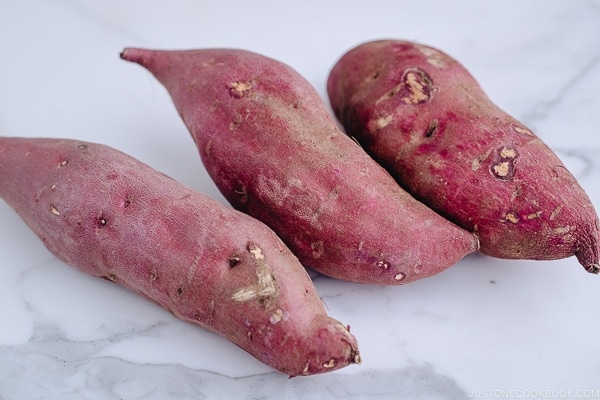
Used in both savory and sweet dishes, Japanese sweet potato or Satsumaimo has a distinctive purple-ish skin. With a sweet and rich flavor, it’s beloved fall produce in Japan. Learn more about the amazingly versatile Japanese sweet potato, its health benefits and how to cook with it today!
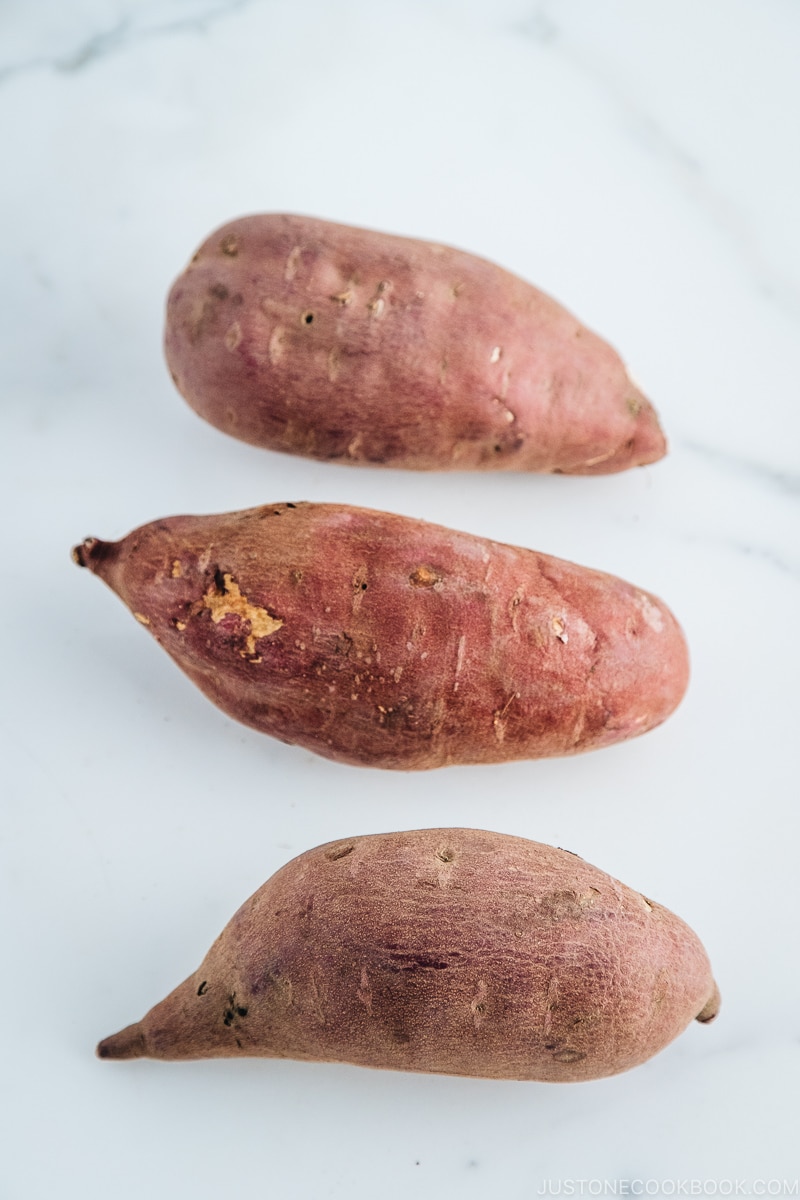
Japanese sweet potatoes are called Satsumaimo (さつまいも, サツマイモ). With distinct purple-ish or reddish color skin, inside the sweet potatoes are creamy white flesh that turns yellow after cooking. They come in small to medium in size and are generally rounder with tapered ends.
In Japan, the sweet potatoes are the signature flavor of fall. Nothing beats the warmth of a freshly roasted Japanese sweet potato when the weather turns cool. The sweet and wonderful aroma fills the air. So comforting that we simply enjoy it as a snack. They are also filling and packed with nutrients. To many Japanese, they are nostalgia food that reminds us of home and the change of season. During the Japanese New Year, the sweet potatoes are boiled and mashed before they are mixed with syrup chestnuts to make a special dish called Kurikinton, which symbolizes wealth and prosperity.
If you are new to Japanese sweet potatoes, let’s discover more about this amazing root vegetable today!
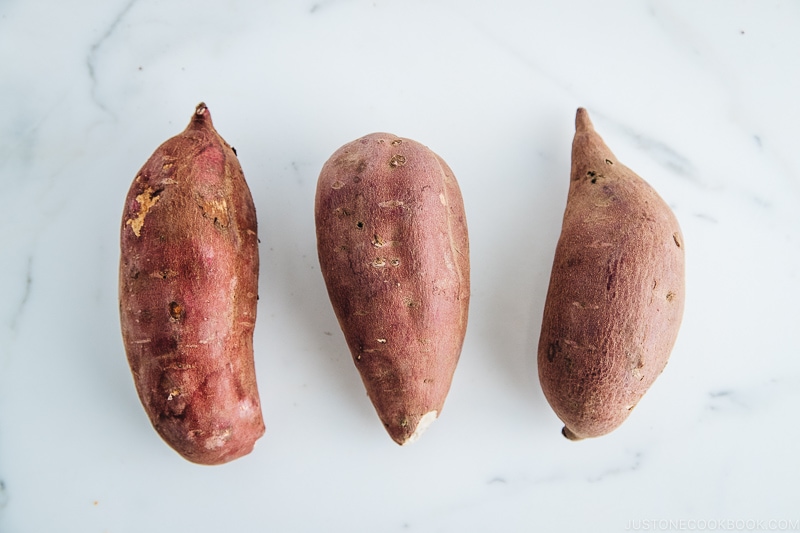
How Does Japanese Sweet Potato Taste Like?
Japanese sweet potatoes have a much sweeter taste than ordinary sweet potato varieties found in the US. They have a nutty flavor that taste somewhat like a roasted chestnut. The texture is drier, firmer and starchier. Its concentrated sweetness makes them an ideal ingredient for making desserts.
The Versatility of Japanese Sweet Potatoes
From roasting, steaming, simmering, deep-frying to baking, there is an endless way to enjoy Japanese sweet potatoes. You may have tried them as tempura, where they are lightly coated with the crispy airy panko shells and deep fried into perfection. Another popular dish is Daigaku Imo, where they are diced into cubes, deep fried till crispy, glazed in a sweet sugary syrup and finished with a sprinkle of black sesame seeds. It is absolutely my favorite!
They can also be used to make sweets, confectionaries, noodles, or added into soups, stews or curries. The possibilities are infinite. Instead of regular sweet potatoes, I love using Japanese sweet potatoes as a filling for my holiday pies. You have to try it!

Where to Find Japanese Sweet Potatoes?
I usually buy the sweet potatoes from my local Japanese grocery store, but you can certainly find them available at major grocery stores in the US these days. Look out for them at Whole Foods, Trader Joes, farmers markets or local co-ops when they are in season.
Do take note that Japanese sweet potatoes are different from the Okinawan sweet potatoes, which have striking purple flesh, although both are considered staple diets of Okinawa.
Storage
They will keep up to a month when stored in a cool, dry, and dark place.
Health Benefits of Japanese Sweet Potatoes
You’re probably aware that all sweet potatoes are good for you. Same goes with Japanese sweet potatoes. High in carbohydrates and dietary fiber, they provide a good source of energy. Which is why they are particularly enjoyed by farmers and hard labor workers in Japan. They are also a great source of vitamins (especially vitamin A), minerals, potassium, iron, and copper. Best of all they contain all the essential amino acids that our bodies need.
Recipes Using Satsumaimo on Just One Cookbook
Here are some of my favorite ways to enjoy Japanese sweet potatoes:
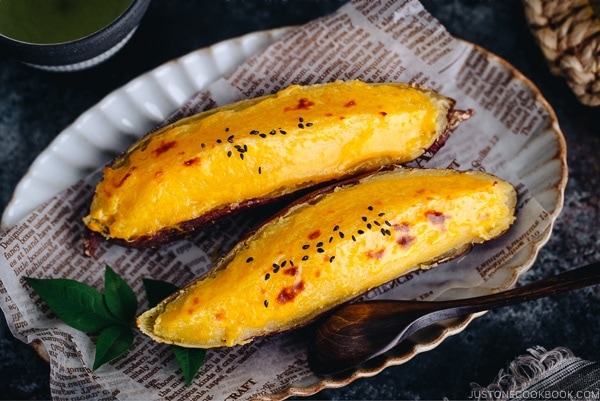
Desserts
Savory
- Steamed Vegetables with Miso Sesame Sauce
- Kuri Kinton (Candied Chestnuts with Sweet Potatoes) for Japanese New Year
- Gluten Free Tempura
- Vegetable Tempura
- Simmered Sweet Potatoes with Lemon
from Merah Hati Cintaku http://bit.ly/2IuBW68
via merahhaticintaku.blogspot.my
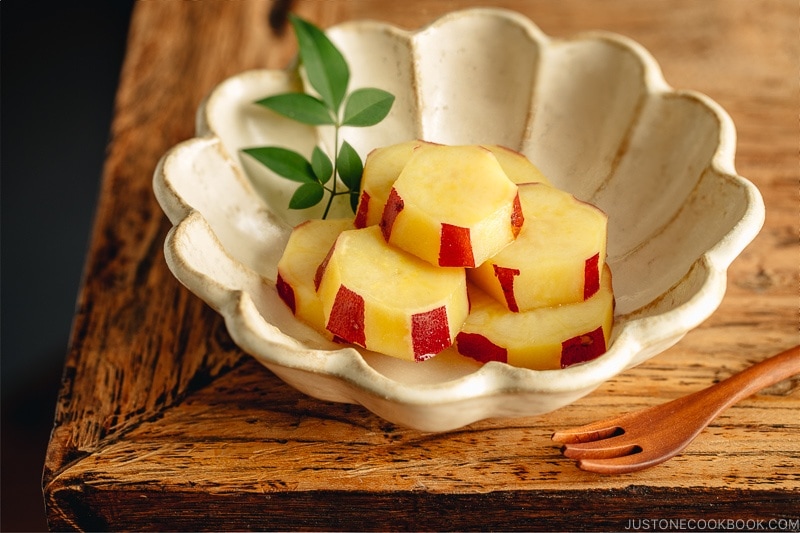
No comments:
Post a Comment